|
|
Post by MikeH on Mar 12, 2013 16:18:37 GMT -5
We've been destroying soil for 10,000 years but it is possible to undo the damage. From this 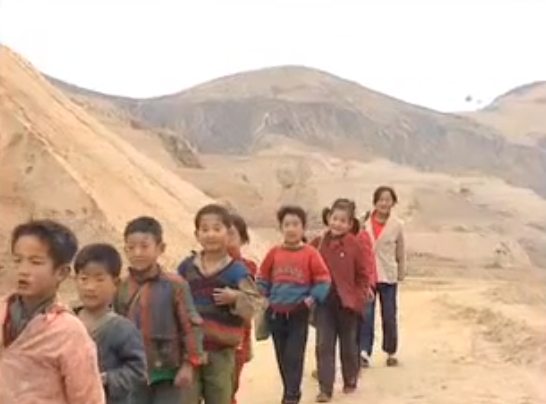 to this, in ten years. This is the same place ten years apart. 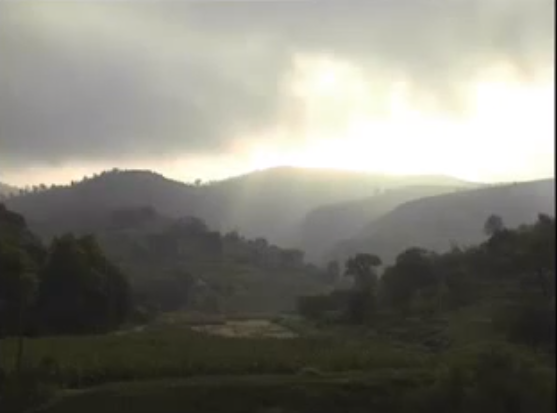 These scenes are from John Liu's Lessons of the Loess Plateau. |
|
|
|
Post by 12540dumont on Mar 13, 2013 15:56:51 GMT -5
Ever been to the Butchart Gardens?
In 1888, near his birthplace, Owen Sound, Ontario, the former dry goods merchant, Robert Pim Butchart, began manufacturing Portland cement. By the turn of the century he had become a highly successful pioneer in this burgeoning North American industry. Attracted to the West Coast of Canada by rich limestone deposits vital for cement production, he built a factory at Tod Inlet, on Vancouver Island. There, in 1904, he and his family established their home.
As Mr. Butchart exhausted the limestone in the quarry near their house, his enterprising wife, Jennie, conceived an unprecedented plan for refurbishing the bleak pit. From farmland nearby she requisitioned tons of top soil, had it brought to Tod Inlet by horse and cart, and used it to line the floor of the abandoned quarry. Little by little, under Jennie Butchart's supervision, the abandoned quarry blossomed into the spectacular Sunken Garden.
By 1908, reflecting their world travels, the Butcharts had created a Japanese Garden on the sea-side of their home. Later an Italian Garden was created on the site of their former tennis court, and a fine Rose Garden replaced a large kitchen vegetable patch in 1929.
To bad she had to mine the local farms for top soil. They could have made it themselves! Still a beautiful place.
|
|
|
|
Post by steev on Mar 13, 2013 20:48:33 GMT -5
At least they did it, instead of walking away.
|
|
|
|
Post by YoungAllotmenteer on Mar 14, 2013 2:33:35 GMT -5
I'm currently reading Gaia's Garden, and there are stories about soil restoration projects in there. The bottom line is always going to be organic matter. You could rejuvenate the Atacama Desert if you had enough compost.
|
|
|
|
Post by MikeH on Mar 14, 2013 4:27:37 GMT -5
|
|
|
|
Post by synergy on Mar 14, 2013 12:36:03 GMT -5
Mike H , did you make that up ? I missed it in my bible study but figure Eden had to be the very first permaculture garden : )
I have watched videos on John Luis' work and others and it is amazing because it is far more extensive than Butchart gardens and very little inputs were brought on site, it was mostly the permaculture type sciences behind regenerating using terracing and living matter. Just amazing the difference it made to the peoples lives, the water quality of the river . Just miraculous, and if we were to repeat that level off regeneration over , and then over again, and then a million times over , we would have a chance perhaps to have a viable planet ! And if we don't, well the consequence is grim .
|
|
|
|
Post by MikeH on Mar 14, 2013 17:25:56 GMT -5
|
|
|
|
Post by MikeH on Mar 14, 2013 17:33:50 GMT -5
I'm currently reading Gaia's Garden, and there are stories about soil restoration projects in there. The bottom line is always going to be organic matter. You could rejuvenate the Atacama Desert if you had enough compost. Yabbut it's an ongoing process. It never stops. You need to use green manure cover crops and no-till. You also have to control flooding and capture water using techniques like P. A. Yeomans keyline design. Using permanent living mulches where you can is good as well. Basically, the soil can never be left uncovered. |
|
|
|
Post by 12540dumont on Mar 15, 2013 2:26:48 GMT -5
You know what I really hate?
Go to goggle maps and look at the Loess Plateau. Can't see if it's real.
But look at my farm, and hell you can see my back door.
Now, if I can't see the rest of the world, why should they be able to see mine?
By the way, I think I've improved every single inch of soil that I have ever farmed. And I'm sorry for ever worm I've killed. But gophers, be damned.
|
|
|
|
Post by MikeH on Mar 15, 2013 8:07:12 GMT -5
Every nation in history that has destroyed its topsoil has ceased to exist. But we're doing it on a global scale. 90% of the arable land in the world is now sterile because of our farming practices. 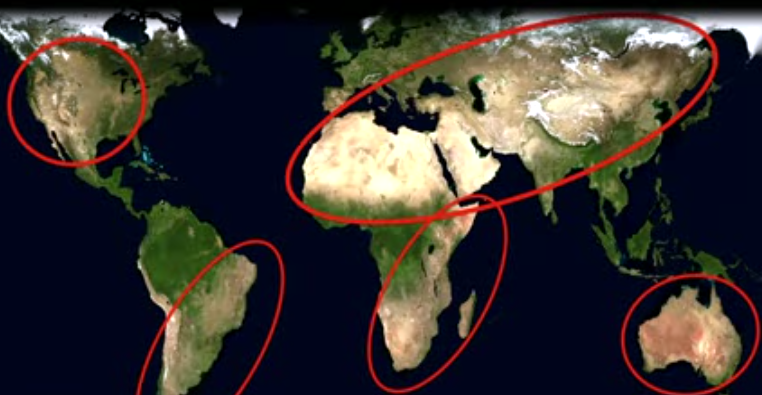 This is Missouri but I see this everywhere around here. I think it's continent wide global. 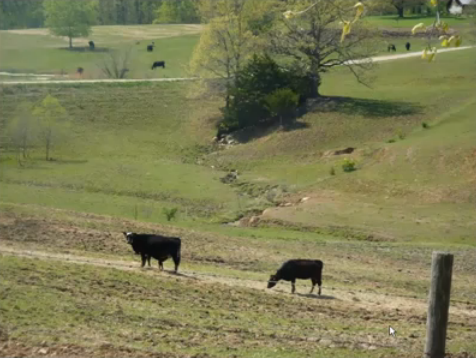 And then there's this. Very intensive mob stocking but look at the ground cover. Half the forage gets grazed and half gets trampled. Before they start eating the trampled forage, they get moved to new pasture. The trampled forage which has dung and urine in it returns to the earth while feeding insects & birds in the process. 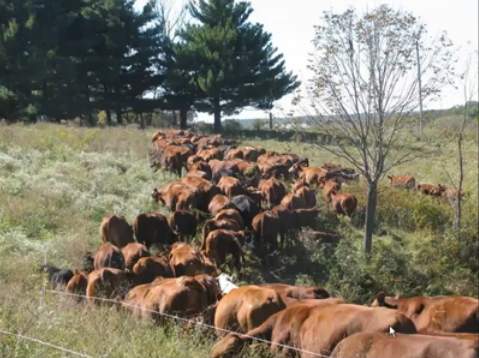 And if cattle aren't involved, there's this on the Loess Plateau. Beauty & function = take your breath away. 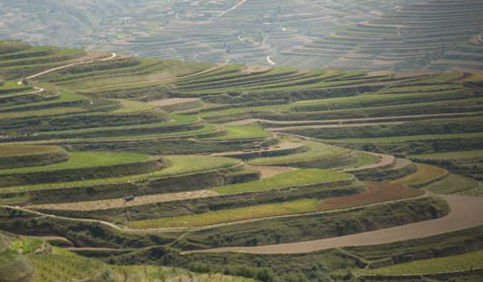 |
|
|
|
Post by richardw on Mar 17, 2013 2:44:16 GMT -5
|
|
|
|
Post by raymondo on Mar 17, 2013 8:51:27 GMT -5
Desertification, or a form of it, is evident where I live. A once heavily treed plateau was cleared for farming. Once the soils could no longer support crops, grazing became the primary occupation of landholders. Land continued to degrade. The entire region suffered a major ecological crisis some 40 years ago where millions of what trees remained perished without explanation. Rotational grazing, now considered de rigueur, has indeed improved the health of the existing pasture lands, but it is not, or hasn't been to date, a means of reinstating the forests and woodlands that once covered the area. I don't believe this would be possible unless cattle and sheep were permanently excluded, and the area left to the native grazing animals. Even that would not be enough because there are three non-native predators, the cat, the fox and to some extent the dog, that have eliminated creatures that once played a vital role in the local ecology. These three would also have to be removed. Neither this nor the removal of domestic livestock is going to happen so we are stuck with having to permanently manage said livestock throughout the region in such a way that we at least don't make things worse.
|
|
|
|
Post by MikeH on Mar 17, 2013 13:11:25 GMT -5
Yep and there's Greg Judy in the Missouri. |
|
|
|
Post by MikeH on Mar 17, 2013 13:50:16 GMT -5
www.savoryinstitute.com/research-and-case-studies/ has four Australian case studies. - Etiwanda Station is a 28,000-hectare property used to produce sheep, cattle and goats. The owners adopted the Holistic Management approximately 10 years ago. They have since experienced easier animal handling, a marked increase in their productivity, and improved pasture management.
- Because of winter and spring concentration of precipitation, dryland wheat farming, and over a century of continuous grazing, vast tracts of land in southwestern New South Wales have lost their perennials and reverted to grasslands dominated by cool season annuals. When the Coughlans began managing holistically in 1997, they set the ambitious goal of achieving 100 percent ground cover; and, in Michael’s words, “We are there.”
- In 1997, George King took over his family farm at Coombing Park, New South Wales. During the 1950s and 1960s the farm was considered one of the best-managed properties in the area. However, when George started farming the property was completely uneconomical. Through Holistic Management he has increased acreage and is now running 2,500 breeding cows. This one'll stand you on your head.
- Tim and Karen Wright’s philosophy - their "holistic goal" - all encompassing and relates not only to their land, but to their lives as a whole.
This booklet details Tim and Karen’s management history, resource issues and enterprises. It goes on to demonstrate the techniques and tools the Wrights use to achieve their holistic goal.
In a couple of cases, they talk about trees regenerating. It may have something to do with the length of time the animals are allowed to graze combined with the length of time the vegetation is given to recover. In the case of Etiwanda, " Each paddock is currently rested for 120 days. The Moselys are looking to extend the rest period to 150–180 days. The aim is to not dip below this threshold as they believe that this is the minimum period that pasture plants require in order to recover following grazing. Andrew notes that drier periods require longer recovery periods." This is very intensive grazing for very short periods of time. There are a couple of techniques - mob grazing and MIG or managed intensive grazing. Apparently they aren't the same as rotational grazing.
|
|
|
|
Post by steev on Mar 18, 2013 1:22:51 GMT -5
That is an interesting lecture. My land was cleared of chapparal 70 years ago. It was farmed to alfalfa and then to wheat, before these were abandoned to pasturing of cattle, but mostly sheep, goats, and horses. When I bought it, it was twenty acres of inorganic soil, without a single tree or shrub.
Ten acres have been fallowed, with largely minimal success to establish scattered trees; I seem to be getting better at that.
Seven acres have been fallowed the past two years, after efforts to cultivate and cover-crop for soil improvement for several years. Some fifty fruit trees were planted there, before being mostly destroyed by voles and elk.
Three acres are fenced against deer, elk, pigs, and rabbits. That's the active farm. I never go to the farm without a load of organic matter, usually rabbit bedding. I've been adding organic matter to this area for nine years; it's getting pretty good. The tilth, water-dispersal, and holding capacity, are very improved.
I think I've largely figured out how I can integrate chickens into this area, which will greatly improve its productivity. It's a problem, since I'm there only a day or two weekly, and I want them to have a large area to forage, while being safe from predators, and not in my plantings.
I've reached an agreement with neighbors to graze their sheep/goats on my fallow acres. They need pasture; I get my roadside mowed for fire control. They need to fence in their critters; I pay for permanent materials. I'm so glad I'm not the one who has to pound in those T-posts, the ground is so dry. Bye-bye, star thistle. Hello, lamb chops (maybe; we'll talk). Trees are impossible in those areas, unless they are protected from the animals; goats will eat the bark right off fairly large trees, climbing into them to browse, as well.
In any event, the point is that we must move to a more sustainable model, from one that relies on heavy artificial input, to one that generates what it needs, to sustain its output.
I would note that while I commend the restoration of the Loess Plateau to productivity, in no way do I see that terracing as a return to any natural ecosystem. It is an environment engineered almost exclusively for the benefit of people, and the irrelevance of other species, both plant and animal. While this is a great improvement over what it had become, it is very impoverished, in the narrowness of its productivity, not unlike thousands of acres of GMO corn or soy.
|
|